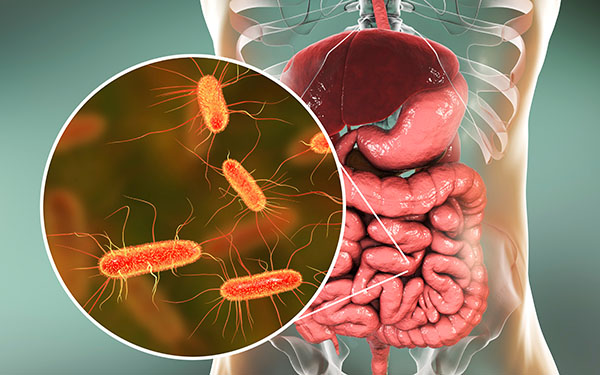Unveiling the science of nutrition: A deep dive into "Nutrition in the Prevention and Treatment of Disease"
- "Nutrition in the Prevention and Treatment of Disease" emphasizes the importance of biomarkers – measurable characteristics that represent biological processes, disease states or responses to interventions.
- Biomarkers are classified into markers of exposure, effect and susceptibility. Advances in biology have expanded the range of biomarkers, providing new insights into nutritional health.
- The concept of functional markers is introduced to assess how well nutrients function in the body. These markers, such as the ratio of LDL oxidation or breath pentane and ethane, provide a deeper understanding of nutrient efficacy beyond mere presence.
- Coulston and Boushey challenge the traditional model, advocating for a more nuanced understanding of nutrient deficiencies and their effects. They propose a "global index" for nutrients like vitamin D, recognizing their multiple functions and impacts on various diseases.
- The authors advocate for a holistic approach, emphasizing the interplay of nutrients, genetics and environmental factors. This perspective is crucial for developing effective strategies for disease prevention and treatment, moving beyond traditional paradigms.
"
Nutrition in the Prevention and Treatment of Disease," authored by Ann M. Coulston and Carol J. Boushey, offers a comprehensive exploration of how nutrition can be harnessed to prevent and treat various ailments. This seminal work, which has become a staple in the field of nutrition science, delves into the critical role of biomarkers, the complexities of nutrient function and the ethical challenges of conducting nutrition research.
At the heart of Coulston and Boushey's work is the concept of biomarkers, which they describe as "measurable characteristics that can indicate normal biological processes, pathogenic processes or responses to an intervention." These biomarkers serve as vital tools in the health detective's arsenal, offering insights into everything from dietary intake to disease predisposition.
Biomarkers can be broadly classified into markers of exposure, effect and susceptibility. They are instrumental in monitoring dietary exposure and assessing nutritional status, providing biochemical data that help evaluate dietary adequacy and rank individuals based on their exposure to specific nutrients. For instance, serum cholesterol and glucose have long been used as biomarkers, but the field has expanded significantly with advances in biology. Today, biomarkers like fecal hemicellulose for dietary fiber and urinary 3-hydroxy-isovalerate for thiamin status are providing new avenues for
understanding nutritional health.
The book also delves into the world of phytochemicals, the bioactive compounds found in plant foods. These compounds, such as isoflavones in soybeans, can be monitored through biomarkers like urinary isoflavone excretion. This is particularly useful in intervention studies to ensure compliance with dietary protocols and to understand the broader impact of plant-based diets on health.
Coulston and Boushey introduce the concept of "functional markers," which indicate how well a nutrient is functioning in the body. For example, the ratio of LDL oxidation or breath pentane and ethane can serve as functional markers for nutrients like magnesium and calcium. These markers provide a deeper understanding of nutrient efficacy, moving beyond mere presence to assess impact on bodily functions. (Related:
Patrick Quillin’s “Beating Cancer with Nutrition” explains the crucial role of nutrition in cancer treatment.)
Interestingly, the book highlights the challenges of objectively measuring energy intake. While methods like indirect calorimetry and the doubly-labeled water technique exist, they each come with limitations. Indirect calorimetry estimates energy expenditure by measuring oxygen consumption and carbon dioxide production, but it is not without its drawbacks. The doubly-labeled water technique, which uses isotopes to measure total energy expenditure, is more accurate but expensive and not widely used.
One of the most exciting areas explored in the book is the use of genetic susceptibility markers. These markers can identify individuals at higher risk of disease due to specific dietary exposures. For instance, genetic variations in the expression of xenobiotic metabolizing enzymes can mediate the potentially mutagenic effect of heterocyclic amines. This field is rapidly evolving and holds great promise for personalized nutrition, where
dietary recommendations are tailored to an individual's genetic makeup.
Coulston and Boushey challenge the traditional "one nutrient, one disease" model, arguing that it is too simplistic. Instead, they propose a framework that recognizes the multiple effects of nutrient deficiencies and the spectrum of latency periods for disease expression. This shift in thinking has significant implications for nutritional policy and research.
The authors advocate for a "global index" for nutrients like vitamin D, which would account for the various ways in which a nutrient functions and the diseases it may influence. This approach could provide a more comprehensive understanding of nutrient efficacy and address the limitations of the traditional evidence-based ranking system.
The book also addresses the ethical and methodological challenges of conducting randomized controlled trials (RCTs) for nutrients. Unlike drugs,
nutrients are essential and depriving individuals of them would be unethical. This makes it difficult to establish causality in nutrient studies. The authors suggest that nonconcurrent cohort studies might be a more suitable alternative, as they avoid some of the ethical issues associated with RCTs.
In conclusion, "Nutrition in the Prevention and Treatment of Disease" is an essential read for anyone interested in the complex interplay between nutrition and health. It challenges readers to move beyond traditional paradigms and embrace a more holistic approach to nutrition science.
Learn more about
nutrition and its role in the prevention and treatment of diseases by watching the video below.
This video is from the
BrightLearn channel on Brighteon.com.
Sources include:
Brighteon.ai
Brighteon.com
 Parler
Parler Gab
Gab










